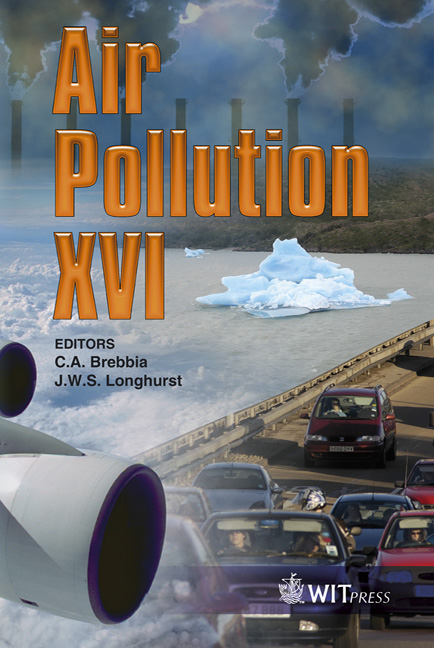An Evaluation Of SOA Modelling In The Madrid Metropolitan Area
Price
Free (open access)
Transaction
Volume
116
Pages
9
Page Range
115 - 123
Published
2008
Size
598 kb
Paper DOI
10.2495/AIR080131
Copyright
WIT Press
Author(s)
M. G. Vivanco, I. Palomino, J. Plaza, B. Artíñano, M. Pujadas & B. Bessagnet
Abstract
The improvement of air quality represents an important challenge for our society. In urban areas, air quality standards are being exceeded. Like other tropospheric pollutants, aerosols are presently under regulation in the European Union. Control of aerosol concentration is an important objective, because high levels can affect human health. As an indirect effect, aerosols can alter earth’s radiative budget by scattering or absorbing radiation, producing a change of ozone production. Because of both direct and indirect aerosol effects, it is important to know aerosol levels in the troposphere. Models can be used as a tool for air quality management. Secondary organic aerosol (SOA) is presently one of the most important topics on air quality modelling. Many aspects of SOA modelling are still a challenge for the scientific community. Unfortunately, the quality of model results cannot be evaluated because SOA measurements are not available at air quality stations. The reason for that is that it is not possible to distinguish experimentally a primary organic aerosol from a secondary one. In this paper, an air quality model was used to simulate hourly SOA concentrations during a 2003 summer period in the Madrid metropolitan area. A simple reaction scheme for SOA was used. Modelled SOA was compared against SOA estimations obtained from thermal OC and EC hourly measurements at an urban background site, using the OC/EC minimum ratio approach. Although a reasonable agreement is observed, higher-resolution simulations with higher-resolution emissions should be carried out in order to improve model predictions. Also, a more complex scheme of SOA formation should be tested to determine the origin of the discrepancies. Keywords: secondary organic aerosols, air quality modelling, organic carbon, elemental carbon.
Keywords
secondary organic aerosols, air quality modelling, organic carbon, elemental carbon.





